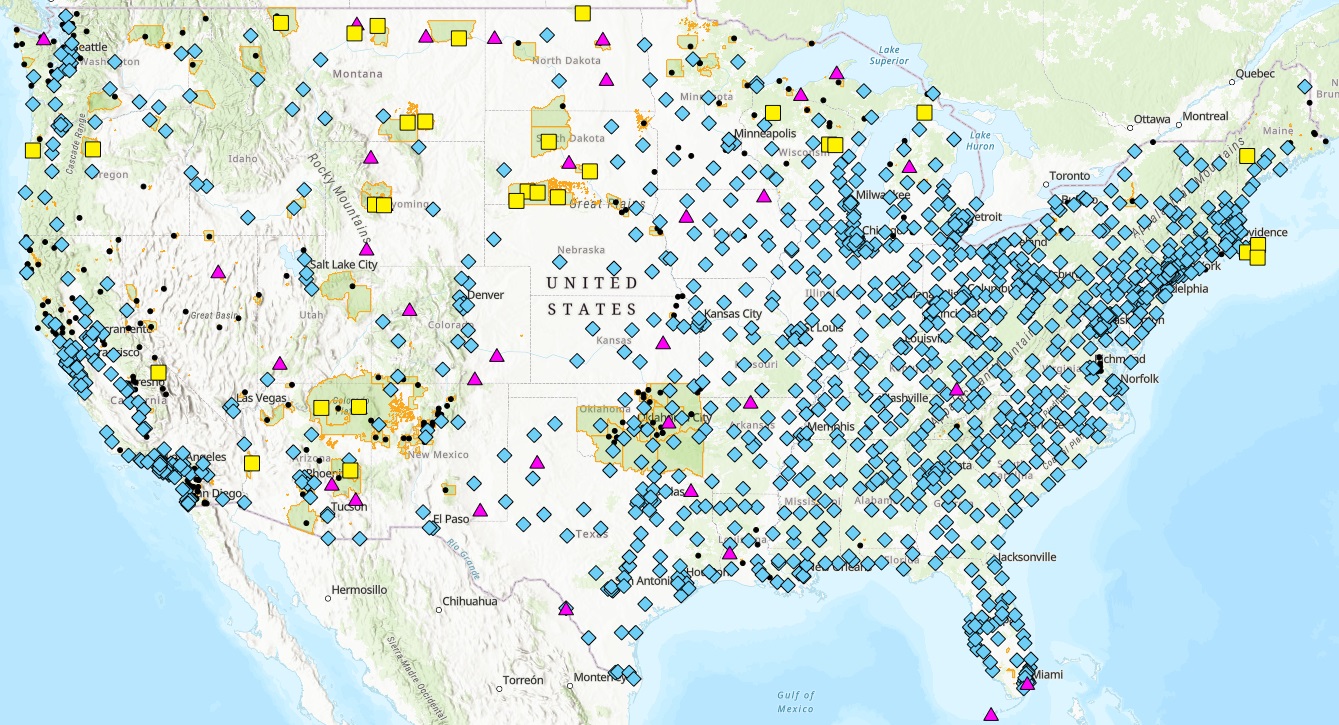Social Security Administration
National American Indians and Alaska Natives (AIAN)
Map Information
Last updated on
 The Social Security Administration (SSA) is committed to strengthening our relationship with Indian tribes through multiple initiatives as defined in Executive Order 13175, Consultation and Coordination with Indian Tribal Governments. The American Indians and Alaska Natives (AIAN) special internet site is the SSA’s effort to improve communication and provide information about all SSA programs for AIAN people.
The Social Security Administration (SSA) is committed to strengthening our relationship with Indian tribes through multiple initiatives as defined in Executive Order 13175, Consultation and Coordination with Indian Tribal Governments. The American Indians and Alaska Natives (AIAN) special internet site is the SSA’s effort to improve communication and provide information about all SSA programs for AIAN people.
Map Purpose
The AIAN map provides tribal information as well as Video Service Delivery (VSD), Field Office, and Resident Station locations to increase awareness of SSA employees about the 574 federally recognized tribes to improve service delivery. This map allows employees to share information with tribal organizations on the services available to them based on the geographical location of the tribal reservation. SSA services include Video Service Delivery (VSD), Field Office, and Resident Station information.
Map Dictionary
Federally Recognized Boundaries: The Department of Interior’s Bureau of Indian Affairs defines Reservation Boundaries as locations, selected demographics, and other associated data for Federally Recognized Tribal entities in the contiguous U.S. and Alaska, including data on American Indian Reservations, Federally Recognized Tribal Entities, and Alaska Native Villages.
Federally Recognized Reservations: The Department of Interior’s Bureau of Indian Affairs defines a Federal Indian reservation as an area of land reserved for a tribe or tribes under treaty or other agreement with the United States, federal statute or administrative action, or executive order as permanent tribal homelands. The federal government holds title to the land in trust on behalf of the tribe.
Federally Recognized Tribes: The Department of Interior’s Bureau of Indian Affairs defines an American Indian or Alaska Native tribe as an entity that has a government-to-government relationship with the United States, with the responsibilities, powers, limitations, and obligations attached to that designation. Federally recognized tribes possess certain inherent rights of self-government (i.e., tribal sovereignty) and are entitled to receive certain federal benefits, services, and protections because of their special relationship with the United States. There are 567 federally recognized American Indian and Alaska Native tribes and villages.
SSA: Regions: The Social Security Administration's headquarters are located in Woodlawn, MD, and divides its offices across the United States into 10 regions. Each region has a main office that oversees the field offices located within that region.
SSA: Video Service Delivery (VSD) Sites: SSA VSD sites are an innovative way of providing services to meet the changing needs of the public. VSD sites allows Social Security employees to provide services to members of the public who are located in other Social Security office areas or remote areas via video conferencing equipment. The VSDs identified in the AIAN map are the ones closest to Indian tribes and reservations.
SSA: Field Offices: SSA field offices generally offer the full range of Social Security services. Services include: applying for new or replacement Social Security cards, applying for Social Security and Supplemental Security income benefits, making changes to your benefits information, and helping Medicare beneficiaries with limited income and resources apply for extra help with the cost of their prescription drugs under the new Medicare Prescription Drug Program. Many of these same services are available on the Social Security Administration's website or through our toll-free service, 1-800-772-1213 (Voice) or 1-800-325-0778 (TTY).
SSA: Resident Stations: SSA resident stations are very small facilities in remote areas, such as a community center, nursing home, etc. Resident Stations have more limited services and are staffed by a small number of employees. Resident stations provide face-to-face services for communities distant from or without easy access to a field office. The Resident Stations identified in the AIAN map are the ones closest to Indian tribes and reservations. They are generally located in sparsely populated areas.
Map Data Sources and Contact Information:
- Department of the Interior: Bureau of Indian Affairs (BIA), Office of Trust Services, Division of Land Titles and Records, Branch of Geospatial Support. For questions about the BIA data, email: Geospatial@bia.gov.
- Social Security Administration: Office of Operations, Detailed Office/Organization Resource System (DOORS), and SSA’s National American Indians and Alaska Natives Workgroup. For questions about the SSA, email: SSA.Tribal.Communications@ssa.gov.